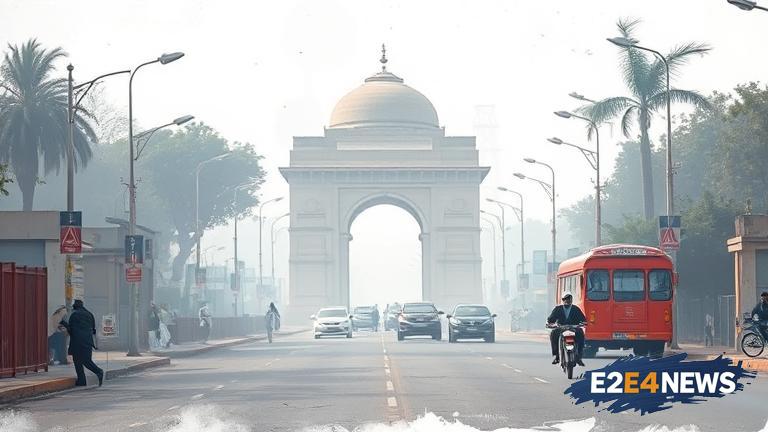India’s capital city, Delhi, has been grappling with severe air pollution issues, and the latest data reveals that the city recorded 57 days of very poor air quality in 2024-25. The air quality index (AQI) is a measure of the level of pollutants in the air, and a reading above 200 is considered ‘very poor’. Byrnihat, a town in the northeastern state of Assam, topped the list with 66 days of very poor air quality. The data highlights the need for urgent attention to address the air pollution crisis in India. The country has been struggling to meet the national air quality standards, and the situation is particularly dire in the northern regions. The main causes of air pollution in India include the burning of fossil fuels, industrial emissions, and agricultural waste. The government has implemented various measures to reduce pollution, including the odd-even traffic rule and the ban on firecrackers. However, more needs to be done to address the root causes of the problem. The air pollution crisis has severe health implications, including respiratory problems, cardiovascular disease, and even premature death. The economic costs of air pollution are also significant, with estimates suggesting that it costs the country billions of dollars each year. The Indian government has set a target to reduce particulate matter (PM) 2.5 levels by 20-30% by 2024. To achieve this goal, the government plans to promote the use of clean energy, increase the use of electric vehicles, and implement stricter emissions standards. The public also has a crucial role to play in reducing air pollution, by making conscious choices such as using public transport, carpooling, and reducing energy consumption. Additionally, individuals can take steps to protect themselves from air pollution, such as wearing masks and using air purifiers. The air pollution crisis is a complex issue that requires a multi-faceted approach. The government, industries, and individuals must work together to reduce emissions and improve air quality. The use of technology, such as air quality monitoring systems, can also help to identify areas of high pollution and inform policy decisions. Furthermore, increasing public awareness and education about the causes and effects of air pollution can help to build a movement for change. The Indian government has also launched several initiatives to promote sustainable development and reduce pollution, including the Smart Cities Mission and the Swachh Bharat Abhiyan. These initiatives aim to improve waste management, promote renewable energy, and enhance public transportation. However, more needs to be done to address the scale and complexity of the air pollution crisis. The international community also has a role to play in supporting India’s efforts to reduce air pollution. The country can learn from the experiences of other nations that have successfully implemented policies to improve air quality. Moreover, international cooperation can help to address the global dimensions of air pollution, such as the transport of pollutants across borders. In conclusion, the air pollution crisis in India is a pressing issue that requires immediate attention. The government, industries, and individuals must work together to reduce emissions and improve air quality. By promoting sustainable development, increasing public awareness, and implementing effective policies, India can reduce the health and economic impacts of air pollution and create a cleaner, healthier environment for its citizens.





